We were invited again to take part in the Roman Day held by St. Saviour’s Junior School in Westgate for their Year 3 pupils. Our activities this year marked the beginning of the school project to study the Romans, giving the children a chance to experience the range of archaeological evidence for Roman studies before they take on the subject in greater detail.

The morning began with a short introduction to the team from the Trust and to the methods that archaeologists use to explore and reconstruct Roman life before we split the group into their classes for the morning hands-on activities. Our first sessions of the day involved using our Dig and Discover dig boxes to explore the typical artefacts found on a Roman excavation.
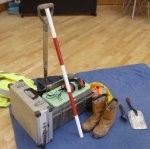
We also demonstrated the tools, clothes and equipment that a professional archaeologist needs to use when they are doing their job, encouraging the children to think about the skills and resources that are needed in a work environment. Our third activity explored the changes the Romans brought to Britain with them by exploring the buildings and facilities they introduced to the towns that grew during the Roman period, building a plan of a Roman town as we explored the main innovations of Roman life, such as the forts, roads, markets, theatres and baths that were built in major towns. We also explored the survival of the remains of these structures in towns and the possibility that they can still be seen and visited today.
After a break, we had a rapid run through three table-top museum displays showing some of the real Roman objects that have been found in Thanet and how we use those objects to explore three important themes in the study of the Romans. The lives of the people of the past were explored using our skeleton and small items of clothing and dress as well as the structure of Roman graves that can tell us about personal beliefs and individual stories. A display of pottery and other manufactured or imported artefacts explored how life changed with the innovations in material objects brought to Britain by the Romans. Our third table explored the building materials the Romans introduced to Britain, which are so characteristic of the changes made to the fabric of houses and other buildings in town and country in the Roman period.
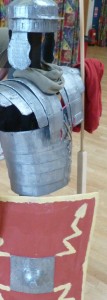
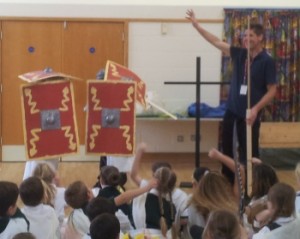
The afternoon session began with an introduction to the soldiers and auxiliaries of the legions, the first Romans to come to Britain in large numbers,. We recruited a new volunteer to dress in our Roman armour costume and serve as a legionary in the Roman Army. With the new addition to the costume of a Pilum, the throwing spear that was the legionary’s main weapon and a marching pack, the experience of being loaded up with equipment demonstrated that the working life of the soldiers was tough and required great physical strength. We also used the shields to explore the fighting tactics of the legionary, using them to create a defensive wall and forming a ‘tortoise’ to defend the soldiers from incoming projectiles. The rest of the classes filled in a work sheet on Roman Armour with a quiz to see if they could remember the names of the parts of the soldiers armour and uniform.
When the individual soldier had been discussed in detail, we went on to examine the structure of the Roman Army in general, which contributed so much to the conquest and Romanisation of Britain. Three classes of Westgatians were formed into legions, their Cohorts led by Centurions and First Centurions under their Primus Pilus. The three legions, the Westgate Wolves, Legendary Lions and Lions of Fire were paraded under their standards by their Legionary Legates (who used to be teachers in civilian life). Finally, the standards were defended by a small detachment of volunteer guards from three volleys of projectiles launched by one of their rival legions, putting the skills of shield walls and tortoise formation into action against a hail of missiles.
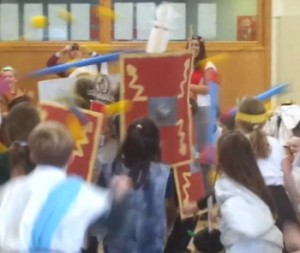
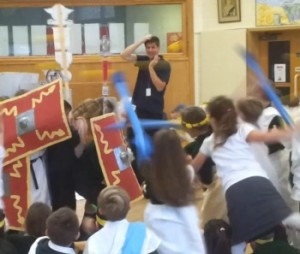
The battle over, the disbanded troops were marched back to their classes to allowed home after almost a whole afternoon of hard service in the Westgate Legions. We had a wonderful day at Westgate with so much enthusiastic participation and many interesting questions from the children. We hope we can follow up by providing more study resources as the pupils progress with their study of the Romans in the coming weeks.